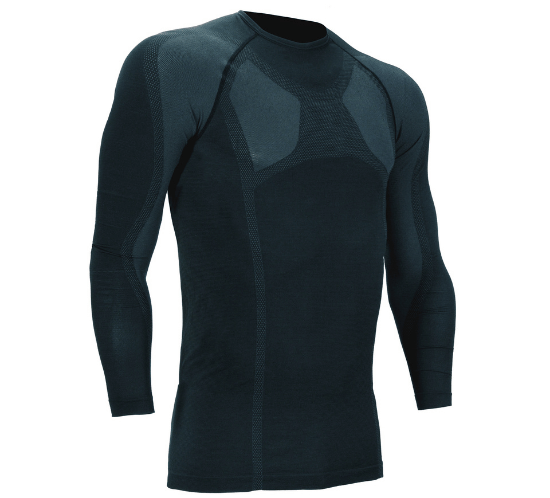
Properties and Overview of CR (Chloroprene Rubber)
Overview:
 CR (Chloroprene Rubber) or by its trade name, Neoprene, is a synthetic elastomer known for its exceptional durability, weather resistance, and versatility. Developed in the early 1930s by DuPont, chloroprene rubber has become a staple material in industries requiring reliable performance under challenging environmental conditions. Its unique properties, including resistance to oil, chemicals, and heat, make it an ideal choice for various applications.
CR (Chloroprene Rubber) or by its trade name, Neoprene, is a synthetic elastomer known for its exceptional durability, weather resistance, and versatility. Developed in the early 1930s by DuPont, chloroprene rubber has become a staple material in industries requiring reliable performance under challenging environmental conditions. Its unique properties, including resistance to oil, chemicals, and heat, make it an ideal choice for various applications.
Production:
The production of chloroprene rubber begins with the polymerization of chloroprene (2-chlorobutadiene) into a flexible and durable elastomer. The process involves emulsion polymerization, where chloroprene monomers are suspended in water and polymerized using catalysts. The resulting polymer can be further modified with additives to enhance specific characteristics, such as flame resistance, elasticity, or abrasion resistance. Once produced, the rubber is vulcanized, creating crosslinks between polymer chains and improving its strength, elasticity, and thermal stability.
Applications:
Chloroprene rubber is widely used across numerous industries due to its robust properties. In the automotive sector, it is commonly used for seals, hoses, and belts, where resistance to oil and heat is essential. In construction, chloroprene rubber finds application in expansion joints, gaskets, and adhesives due to its durability and ability to withstand harsh environmental conditions. Its resistance to water and chemicals makes it a popular choice for wet suits, gloves, and protective clothing in marine and industrial settings. Additionally, chloroprene rubber is used in electrical insulation, where its flame resistance and durability ensure long-lasting performance. Its flexibility and cushioning properties make it valuable in producing sports equipment and orthopedic braces.
Summary:
Chloroprene rubber is a versatile and durable material that has become a reliable solution for applications demanding resilience and environmental resistance. Its strength, flexibility, and resistance to oils, chemicals, and weather ensure its ongoing industry relevance. As innovation continues to refine its properties, chloroprene rubber remains a critical material in engineering, manufacturing, and consumer products.
See a comprehensive list of electrical, mechanical, physical and thermal properties for CR (Chloroprene Rubber) below:
Electrical Properties of CR (Chloroprene Rubber)
| Electrical Property (Units) | Value |
|---|---|
| CR (Chloroprene Rubber) Dielectric Constant at 'Standard Temperature and Pressure' | 5.7 to 6.0 |
| CR (Chloroprene Rubber) Electrical Breakdown Voltage at Atmospheric Pressure (kV/mm) | ~10 to 15 |
| CR (Chloroprene Rubber) Electrical Conductivity (S/m) | 1.00E-13 to 1.00E-11 |
| CR (Chloroprene Rubber) Electrical Resistivity at Room Temperature (25°C) (Ω·m) | 1.00E+11 to 1.00E+13 |
| CR (Chloroprene Rubber) Magnetic Property | N/A |
| CR (Chloroprene Rubber) Superconducting Transition Temperature (K) | N/A |
| CR (Chloroprene Rubber) Temperature Coefficient of Resistance (°C⁻¹) | Unknown |
Unfamiliar with a property? Click it's description to be given a full definition in the GLOSSARY
See properties and overview for
ALLOYS and CHEMICAL ELEMENTS
popular in engineering
Require different units not displayed?
CONVERT VARIOUS UNITS HERE
Mechanical Properties of CR (Chloroprene Rubber)
Unfamiliar with a property? Click it's description to be given a full definition in the GLOSSARY
See properties and overview for
ALLOYS and CHEMICAL ELEMENTS
popular in engineering
Require different units not displayed?
CONVERT VARIOUS UNITS HERE
Physical Properties of CR (Chloroprene Rubber)
| Physical Property (Units) | Value |
|---|---|
| CR (Chloroprene Rubber) Boiling Point at Atmospheric Pressure (°C) | Decomposes |
| CR (Chloroprene Rubber) Chemical Composition (Element %) | (C4H5Cl)n |
| CR (Chloroprene Rubber) Cost ($/kg) | 2 to 6 |
| CR (Chloroprene Rubber) Density at 'Standard Temperature and Pressure' (kg/m3) | 1230 to 1250 |
| CR (Chloroprene Rubber) Glass Transition Temperature at Atmospheric Pressure (°C) | -40 to -10 |
| CR (Chloroprene Rubber) Melting Point at Atmospheric Pressure (°C) | ~150 to 220 |
| CR (Chloroprene Rubber) Polymer Family | Thermosetting |
| CR (Chloroprene Rubber) Refractive Index | 1.52 to 1.54 |
| CR (Chloroprene Rubber) Specific Gravity | 1.23 to 1.25 |
| CR (Chloroprene Rubber) Viscosity at Melting Point (mPa·s) | Unknown |
Unfamiliar with a property? Click it's description to be given a full definition in the GLOSSARY
See properties and overview for
ALLOYS and CHEMICAL ELEMENTS
popular in engineering
Require different units not displayed?
CONVERT VARIOUS UNITS HERE
Thermal Properties of CR (Chloroprene Rubber)
| Thermal Property (Units) | Value |
|---|---|
| CR (Chloroprene Rubber) Coefficient of Thermal Expansion (µm/m·K) | 200 to 400+ |
| CR (Chloroprene Rubber) Emissivity Coefficient | ~0.9 |
| CR (Chloroprene Rubber) Specific Heat Capacity (J/kg·K) | 2100 to 2300 |
| CR (Chloroprene Rubber) Thermal Conductivity (W/m.K) | 0.2 |
| CR (Chloroprene Rubber) Thermal Conductivity (BTU/h·ft·°F) | 0.12 |
Unfamiliar with a property? Click it's description to be given a full definition in the GLOSSARY
See properties and overview for
ALLOYS and CHEMICAL ELEMENTS
popular in engineering
Require different units not displayed?
CONVERT VARIOUS UNITS HERE
 ADDED TO MY FAVORITES!
ADDED TO MY FAVORITES! REMOVED FROM MY FAVORITES!
REMOVED FROM MY FAVORITES!